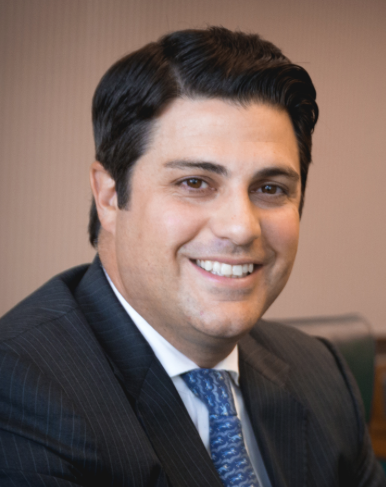U.S. stocks were lower in February as the market’s repricing of the Federal Reserve’s rate-hike expectations gave back some of January’s gains. It was a year ago this month that the Fed announced its first rate hike since 2018 as it sought to lower inflation. Recent data suggests that the Fed has quelled some of the inflation surge, but the Fed’s credibility remains in question after initially dismissing inflation’s non-transitory warning signs.
Macroeconomic data has driven most of the market’s volatility for the past six months, and February was no different. The Fed is trying to thread a needle to execute a soft landing that beats inflation and avoids a recession. As investors wait for positive momentum, we see this macro-driven volatility as an opportunity. Mr. Market’s panic and euphoria around inflation prints often create greater discounts to intrinsic value, which is exactly what we are looking for.
Growth stocks have substantially outperformed value stocks to start 2023, and we believe this creates an opportunity for us Value Investors. The “January Effect”, in which laggards from the previous year outperform in the first few weeks of the new year, was especially pronounced to start the year. This price movement has had little to do with fundamental value, but rather is based on more short-term trading dynamics. Rising interest rates will put a premium on the near term cash flows, which we prize in our stock selection process. Inversely, this has pressured and will continue to pressure growth stocks that have longer dated cash flow expectations.
The Convertible market followed equities lower in February after a strong start to the year. Companies that reported earnings this month generally reported strong quarters with cautious outlooks for the year as they remain very focused on expense reduction and profitability over growth. With many convertibles trading more like fixed income than equity equivalent, this focus should benefit convertible holders.
Convertible issuance picked up in the month of February, with attractive terms. We expect companies to use convertibles when raising capital this year to manage interest expense and extend maturities in a covenant lite structure. We believe many companies have delayed coming to the market and converts offer an attractive way for companies to add relatively lowcost capital to their balance sheets. Continued issuance allows investors to stay current and by selectively layering new issues into their, they are able to maintain the asymmetrical risk profile we continue to believe in.
Despite a number of positive developments in the Merger Arb space, setbacks in several deals, plus the volatility in the markets and a return to “risk-off” trading, lead to wider spreads on a mark-to-market basis. In Standard General’s acquisition of Tegna, Inc., the FCC issued a surprise Hearing Designation Order (HDO) which could potentially extend the deal’s timeline beyond the merger agreement‘s termination date. More broadly, the recent elevated market volatility and uncertainty over the Federal Reserve’s trajectory resulted in wider spreads, thereby creating opportunities for us to earn greater absolute returns.
Although markets have gyrated and spreads have widened generally, there were reasons for optimism as a pair of deals that had become the subject of extended antitrust scrutiny won regulatory approval and closed in February. In addition, several notable deals closed including STORE Capital, which was acquired by a consortium led by GIC for $14 billion, KnowBe4 Inc., which was acquired by Vista Equity Partners for $4 billion, and CinCor Pharma Inc., which was acquired by AstraZeneca for $1 billion.
Despite interest rate and market volatility, companies continued to announce new acquisitions in February and March. So far in March SeaGen (SGEN-$200.30-NASDAQ) agreed to be acquired by Pfizer for $41 billion in cash, Univar Solutions (UNVR-$34.68NYSE) agreed to be acquired by Apollo Funds for $8 billion in cash, and Qualtrics (XM-$17.65-NASDAQ) agreed to be acquired by a consortium led by Silver Lake Management for $10 billion.
To access our proprietary value investment methodology, and dedicated merger arbitrage portfolio we offer the following UCITS Funds in each discipline:
GAMCO MERGER ARBITRAGE
GAMCO Merger Arbitrage UCITS Fund, launched in October 2011, is an open-end fund incorporated in Luxembourg and compliant with UCITS regulation. The team, dedicated strategy, and record dates back to 1985. The objective of the GAMCO Merger Arbitrage Fund is to achieve long-term capital growth by investing primarily in announced equity merger and acquisition transactions while maintaining a diversified portfolio. The Fund utilizes a highly specialized investment approach designed principally to profit from the successful completion of proposed mergers, takeovers, tender offers, leveraged buyouts and other types of corporate reorganizations. Analyzes and continuously monitors each pending transaction for potential risk, including: regulatory, terms, financing, and shareholder approval.
Merger investments are a highly liquid, non-market correlated, proven and consistent alternative to traditional fixed income and equity securities. Merger returns are dependent on deal spreads. Deal spreads are a function of time, deal risk premium, and interest rates. Returns are thus correlated to interest rate changes over the medium term and not the broader equity market. The prospect of rising rates would imply higher returns on mergers as spreads widen to compensate arbitrageurs. As bond markets decline (interest rates rise), merger returns should improve as capital allocation decisions adjust to the changes in the costs of capital.
Broad Market volatility can lead to widening of spreads in merger positions, coupled with our well-researched merger portfolios, offer the potential for enhanced IRRs through dynamic position sizing. Daily price volatility fluctuations coupled with less proprietary capital (the Volcker rule) in the U.S. have contributed to improving merger spreads and thus, overall returns. Thus our fund is well positioned as a cash substitute or fixed income alternative.
Our objectives are to compound and preserve wealth over time, while remaining non-correlated to the broad global markets. We created our first dedicated merger fund 32 years ago. Since then, our merger performance has grown client assets at an annualized rate of approximately 10.7% gross and 7.6% net since 1985. Today, we manage assets on behalf of institutional and high net worth clients globally in a variety of fund structures and mandates.
Class I USD – LU0687944552
Class I EUR – LU0687944396
Class A USD – LU0687943745
Class A EUR – LU0687943661
Class R USD – LU1453360825
Class R EUR – LU1453361476
GAMCO ALL CAP VALUE
The GAMCO All Cap Value UCITS Fund launched in May, 2015 utilizes Gabelli’s its proprietary PMV with a Catalyst™ investment methodology, which has been in place since 1977. The Fund seeks absolute returns through event driven value investing. Our methodology centers around fundamental, research-driven, value based investing with a focus on asset values, cash flows and identifiable catalysts to maximize returns independent of market direction. The fund draws on the experience of its global portfolio team and 35+ value research analysts.
GAMCO is an active, bottom-up, value investor, and seeks to achieve real capital appreciation (relative to inflation) over the long term regardless of market cycles. Our value-oriented stock selection process is based on the fundamental investment principles first articulated in 1934 by Graham and Dodd, the founders of modern security analysis, and further augmented by Mario Gabelli in 1977 with his introduction of the concepts of Private Market Value (PMV) with a Catalyst™ into equity analysis. PMV with a Catalyst™ is our unique research methodology that focuses on individual stock selection by identifying firms selling below intrinsic value with a reasonable probability of realizing their PMV’s which we define as the price a strategic or financial acquirer would be willing to pay for the entire enterprise. The fundamental valuation factors utilized to evaluate securities prior to inclusion/exclusion into the portfolio, our research driven approach views fundamental analysis as a three pronged approach: free cash flow (earnings before, interest, taxes, depreciation and amortization, or EBITDA, minus the capital expenditures necessary to grow/maintain the business); earnings per share trends; and private market value (PMV), which encompasses on and off balance sheet assets and liabilities. Our team arrives at a PMV valuation by a rigorous assessment of fundamentals from publicly available information and judgement gained from meeting management, covering all size companies globally and our comprehensive, accumulated knowledge of a variety of sectors. We then identify businesses for the portfolio possessing the proper margin of safety and research variables from our deep research universe.
Class I USD – LU1216601648
Class I EUR – LU1216601564
Class A USD – LU1216600913
Class A EUR – LU1216600673
Class R USD – LU1453359900
Class R EUR – LU1453360155
GAMCO CONVERTIBLE SECURITIES
GAMCO Convertible Securities’ objective is to seek to provide current income as well as long term capital appreciation through a total return strategy by investing in a diversified portfolio of global convertible securities.
The Fund leverages the firm’s history of investing in dedicated convertible security portfolios since 1979.
The fund invests in convertible securities, as well as other instruments that have economic characteristics similar to such securities, across global markets (but the fund will not invest in contingent convertible notes). The fund may invest in securities of any market capitalization or credit quality, including up to 100% in below investment grade or unrated securities, and may from time to time invest a significant amount of its assets in securities of smaller companies. Convertible securities may include any suitable convertible instruments such as convertible bonds, convertible notes or convertible preference shares.
By actively managing the fund and investing in convertible securities, the investment manager seeks the opportunity to participate in the capital appreciation of underlying stocks, while at the same time relying on the fixed income aspect of the convertible securities to provide current income and reduced price volatility, which can limit the risk of loss in a down equity market.
Class I USD LU2264533006
Class I EUR LU2264532966
Class A USD LU2264532701
Class A EUR LU2264532610
Class R USD LU2264533345
Class R EUR LU2264533261
Class F USD LU2264533691
Class F EUR LU2264533428
Disclaimer:
The information and any opinions have been obtained from or are based on sources believed to be reliable but accuracy cannot be guaranteed. No responsibility can be accepted for any consequential loss arising from the use of this information. The information is expressed at its date and is issued only to and directed only at those individuals who are permitted to receive such information in accordance with the applicable statutes. In some countries the distribution of this publication may be restricted. It is your responsibility to find out what those restrictions are and observe them.
Some of the statements in this presentation may contain or be based on forward looking statements, forecasts, estimates, projections, targets, or prognosis (“forward looking statements”), which reflect the manager’s current view of future events, economic developments and financial performance. Such forward looking statements are typically indicated by the use of words which express an estimate, expectation, belief, target or forecast. Such forward looking statements are based on an assessment of historical economic data, on the experience and current plans of the investment manager and/or certain advisors of the manager, and on the indicated sources. These forward looking statements contain no representation or warranty of whatever kind that such future events will occur or that they will occur as described herein, or that such results will be achieved by the fund or the investments of the fund, as the occurrence of these events and the results of the fund are subject to various risks and uncertainties. The actual portfolio, and thus results, of the fund may differ substantially from those assumed in the forward looking statements. The manager and its affiliates will not undertake to update or review the forward looking statements contained in this presentation, whether as result of new information or any future event or otherwise.


